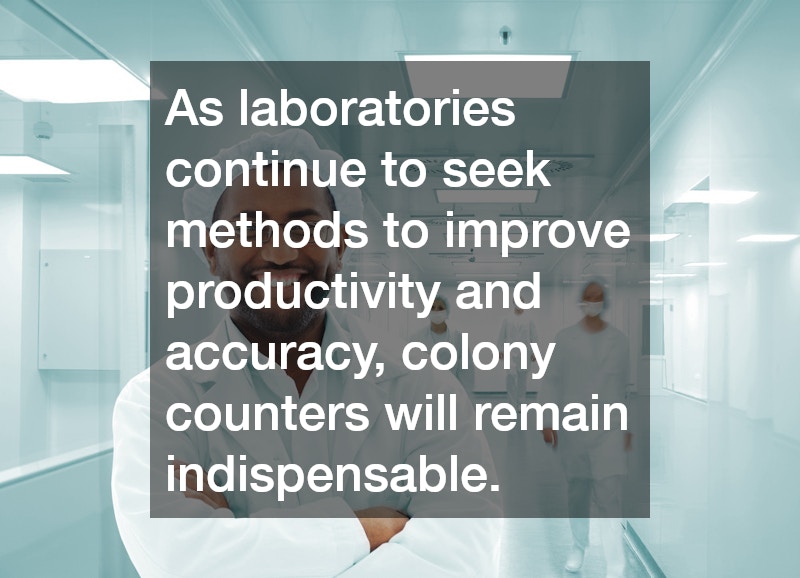Colony counters are essential tools in laboratories, particularly in microbiology, where they expedite the process of counting colonies of microorganisms. Their employment improves accuracy, efficiency, and can lead to significant advancements in research. In this article, we will delve into the specific advantages of using a colony counter and address common queries concerning its utility and operation.
How Does a Colony Counter Improve Laboratory Efficiency?
Expedited Processes
Colony counters significantly reduce the time required to count colonies manually. This acceleration allows researchers to process more samples in a shorter period, enhancing the overall efficiency of the laboratory. Furthermore, by freeing up time, scientists can allocate more resources to experiment design and data analysis, fostering more comprehensive research outputs.
Automated colony counters allow labs to scale their operations effectively, handling larger volumes of samples without requiring additional manpower. This ability to handle high throughput is crucial in environments where timely data collection is critical, such as in pharmaceutical developments or long-term environmental studies. Moreover, the speed provided by colony counters is consistent, aiding in maintaining regular project timelines and deadlines.
Reduced Human Error
The precision of colony counters diminishes the frequency of mistakes that can occur with manual counting, thereby ensuring more reliable experimental results. Human error, such as miscounting due to fatigue or oversight, is minimized through the use of electronic systems that can deliver reproducible outcomes consistently. This accuracy is vital in experiments where small errors can lead to significant discrepancies in data interpretation.
Colony counters utilize robust algorithms that identify and count colonies based on predefined parameters, significantly reducing subjective judgment errors. The automated nature of this technology means that once set correctly, it can handle even large and complex plates accurately, providing consistent counts over repeated trials. Accurate colony counting is crucial for results that inform critical research findings, such as antibiotic resistance studies or microbial load in water samples.
Streamlined Workflow
By automating part of the data collection process, colony counters allow researchers to focus on qualitative analysis and reduce repetitive tasks. This shift in tasks enhances cognitive engagement among laboratory personnel, who can now concentrate on interpreting patterns and anomalies in microbial growth rather than counting colonies. With colony counters taking over routine counting, lab staff can redirect their expertise to experimental refinement and innovation.
Implementing colony counters in laboratory protocols means that data acquisition is not only faster but also highly organized, leading to a more efficient workflow. This streamlined process enhances coordination in multi-disciplinary projects where timing, data accuracy, and accessibility are key. The interconnected nature of equipment through laboratory information management systems helps simplify lab practice, making better use of human resources and available technology.
What are the Technological Features of Modern Colony Counters?
Advanced Imaging Technology
Modern colony counters often incorporate high-resolution imaging systems that improve the accuracy of recognizing and counting colonies, even those that are small or overlapping. These imaging systems operate by capturing detailed images, which are then analyzed to distinguish colonies against the medium background. This technology covers situations where manual counting is impractical due to poor visibility or clustering.
With sophisticated image analysis algorithms, current colony counters can differentiate between various colony morphologies, further increasing the reliability of data. Advanced imaging aids in categorizing colonies based on size, shape, and color, offering expanded functionality for different experimental needs. The use of ImageJ software is common, providing open-source options for further analysis and customization.
Data Integration Capabilities
Many contemporary models are equipped with software that enables seamless data transfer and integration with laboratory information management systems (LIMS), enhancing data accessibility and traceability. This integration ensures that all counted data can be immediately archived in digital databases for future analysis or reporting. Additionally, this connectivity supports efficient data sharing across departments or collaborating institutions.
These systems often support various file formats, ensuring compatibility with existing IT infrastructure and research tools. The direct transfer of data into digital platforms minimizes transcription errors, promoting data integrity and compliance with regulatory standards. In high-stakes industries, such as biotechnology and pharmacology, ensuring accurate data logging from colony counters is critical for monitoring processes and adhering to protocols.
The use of colony counters in laboratory settings presents numerous benefits, including increased efficiency, minimized errors, and advanced technological features. As laboratories continue to seek methods to improve productivity and accuracy, colony counters will remain indispensable in the realm of scientific research. Embracing these innovative tools not only advances the quality and speed of data acquisition but also sets a precedent for continued technological integration in scientific processes.
.


